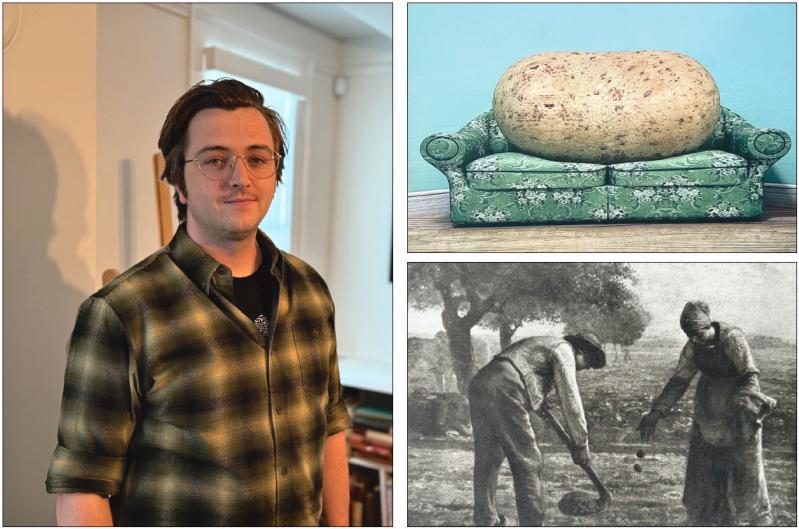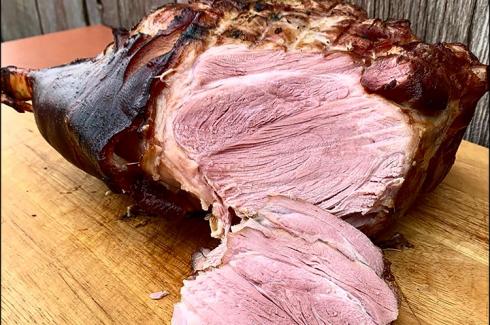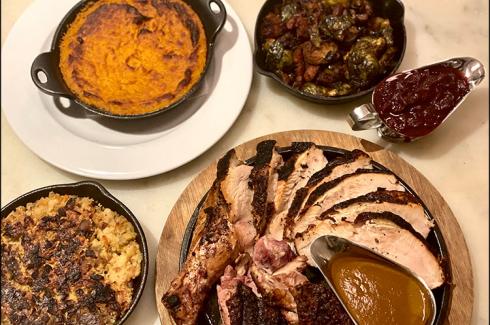When Connor Flanagan took on the role of executive director of the Bridgehampton Museum in the fall of 2023, he was given an opportunity rarely afforded those in his position: starting, for the most part, “from scratch.”
The Nathaniel Rogers House, the historical property occupied by the museum under a long-term stewardship agreement with the Town of Southampton, had reopened to the public only a few months earlier after undergoing an extensive, nearly two-decade-long restoration. “There were some exhibits that had been set up before me, but they were minimal. So it was really an open canvas for us. I was told we had to open in March, and I said ‘okay.’ “
Mr. Flanagan was rather uniquely suited to the task. He was familiar with the area, having been raised in Riverhead with friends spanning the eastern part of Long Island “from Rocky Point to Montauk,” and had developed an interest in history early in life. He was inadvertently set on his current career path while attending Aurora University in Illinois, when he enrolled in a museum studies class to fulfill credit hours toward his history degree.
“I always learn best from doing,” he said. “I’ve always found that to be the best and most engaging way to bring people in, especially to a subject they — 90 percent of the time — don’t care about or aren’t interested in.” He liked the idea of teaching, but personally found it difficult to learn new material just from reading or listening to someone talk. Museums, he realized, could immerse visitors in stories of the past more fully, through different mediums and narrative experiences, appealing to multiple senses and learning styles.
He got an internship at the Southampton History Museum the summer before his senior year, and was offered a permanent position after his graduation. He worked there for the better part of a decade, progressing from museum assistant to assistant director, until he left to take the helm at the Bridgehampton Museum. He hired the collections manager, Tim Malyk, shortly thereafter, and together they worked to create a “cultural hub” for Bridgehampton.
“Most of our guests are accidental, and so you kind of have to trick them into having a fun time and learning about the local history,” he said. “Creating opportunities for that has been fun, and also rewarding.” He draws a lot of inspiration from the very tactile, hands-on spaces of children’s museums and science centers, and likes to figure out ways to incorporate that element of “play” into exhibits.
Last year he and Mr. Malyk commissioned a slot car track in the shape of the famed Bridgehampton Race Circuit for their exhibit about the town’s history of automobile racing. The first iteration of the show had been very static, consisting of posters, archival photos, and memorabilia, and included a video that would engage visitors to an extent, but lacked a “certain level of fun” that was so much a part of the sport.
The ability to engage directly with a representation of the very track that had once existed just outside the building, they found, brought the history to life in a way the original exhibit had not been able to. All summer long visitors were drawn to the installation, racing miniature cars as Mr. Flanagan filled them in on historical details. Even better, he added, members of the community would stop by to share their own stories and memories of the track with other guests.
“We’re preserving our history and our culture, and the history and culture of Bridgehampton is the fishermen. It’s the architects and the blue-collar workers and the farmers. It’s also all the artists and the writers and everybody that lived in this area. It’s a matter of preserving all their history. And the best way to do that, we think, is by engaging people hands-on.”
They launched a “smattering” of programs in their first year, including a popular series of plein air painting classes. “We started with six because they’re all funded by grants, and everybody had a really fantastic time.” This year they expanded the program to 10 sessions, which will culminate in an exhibition of the students’ work at the museum in the fall.
In response to requests from visitors the museum went on to introduce indoor watercolor classes, and it has a series of figure drawing classes starting up next month. “It’s just a matter of the right person wandering in, and wanting to work together,” Mr. Flanagan said. “We have an embarrassment of riches out here in terms of people who can teach these classes.” The museum also regularly hosts guest speakers for history lectures on diverse topics of local interest, and recently worked with the Southampton Town historian, Julie Greene, to set up tours of the nearby Beebe Windmill.
The museum right now is preparing for the Friday, June 6, opening of “I Say Potato,” an immersive and interdisciplinary exhibit about the history of the potato crop on Long Island, with a focus on its presence, both literal and symbolic, in the fields of Bridgehampton. The show will present an array of perspectives and experiences, featuring historical photographs and the works of artists from across the East End in diverse mediums and spanning two centuries.
Looking forward, Mr. Flanagan anticipates a major renovation of the Corwith House, the real “home” of the museum, across from the Bridgehampton Community House, but described that as more of a “five-to-10-year situation.” For now, though, his focus is to keep moving forward. Admission to the museum is free, and always will be, and he hopes eventually to secure the funding necessary to reduce the cost of all programs to a nominal fee of $5, as he has found that people who sign up for free events often don’t show up.
“We are still hearing ‘I didn’t know you existed’ or ‘we didn’t know this was here’ — but less often. So we’re seeing the community grow, which is really fantastic.”




